Adventure of Hourai High School!! Transfer Student Scramble (蓬萊学園の冒険), released 4/19/1996, developed by J Wing
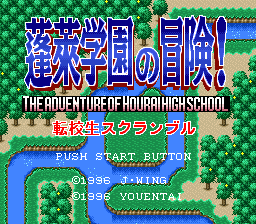
This is a game based on a somewhat extensive 1990s franchise that began with a “play by mail” game in a magazine — this is about the third or fourth game I’ve covered that started as one of these magazine games. From there they made a tabletop RPG with supplement books, and several manga and novelizations. This was the only video game. The setting is a huge island with a sprawling high school campus as well as some other locations that can serve as places for adventure.

The main feature of the system are the school clubs, which I imagine was a big part of the other versions of the game as well. Each character can be a member of 3 clubs, each of which has 3 levels. This is basically a job system, and when you “master” a club you can keep its abilities even if you switch to another club. Each club requires a certain kind of personality to join, so only certain people can join certain clubs. Some also have level requirements.
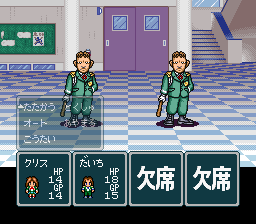
This is an interesting system but there are three issues that make it not as good as it could have been:
- You cannot see what abilities do in battle, only from the out of battle status menu. This is annoying given the large number of abilities.
- Switching clubs is a hassle because you have to go to the club building for most of them, but some of the better clubs are in other locations that require you to go through dungeons or make long trips. When you have a party of 10 people or more it’s tedious to do that.
- Finally, the game is so easy that the club abilities aren’t really necessary. The random encounter rate is very high. You do recover HP and GP (for the abilities) on level up, so you could use your abilities frequently, but it’s easier just to hold down a turbo button and speedup key. The bosses are easy enough that I beat them all just using a few basic club abilities, mostly the “triple hit” from the Kendo club and the heal abilities that you can get from one of the starting clubs as well. Although I rarely even had to heal in a boss fight.
You get a lot of companions throughout the game and earn “friendship points” that you can level up people’s connection to you, which strengthens their friendship ability that you can use before a battle. I tried using these a few times and they failed so I pretty much ignored this.
Sometimes I feel like this kind of criticism is a bit unfair to the game and may not reflect everyone’s experience — because of this project I’m doing, I’m usually looking to cut corners to finish a game faster unless it’s an exceptionally fun game. I imagine that if I had this game as a teenager I probably would have spent a lot more time with the job system.
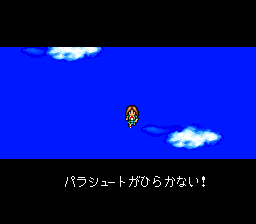
The story involves one year in the life of a transfer student, who you name and choose the sex of. She is complaining that the plane trip is taking too long and so they push her out of the plane — her parachute doesn’t open so she lands in the middle of the new semester assembly, sending one student to the hospital. She immediately joins the school newspaper, and a lot of the game involves seeking scoops for that paper.
As you might be able to see from that description of the start, the story is relatively silly and involves a lot of gags and surreal things. It takes place over thirteen different dates in the year.

The first chapter is in April, and is basically just the introduction. Trying to get a scoop, you overhear someone seemingly hypnotize the student council into approving a “horse fight” competition (which you can see above). In the US we usually do this in a swimming pool, but when I was in Japan on the JET program I saw them do this on dirt fields in both elementary and middle school — I couldn’t believe people didn’t get seriously injured (you have to try to knock the top person off).
In May the first of the new “rules” goes up, that students have to exercise every day. In the jungle we do the competition, but also free someone named Hinako from a cell; someone unknown imprisoned her because she’s descended from some ancient priestesses.
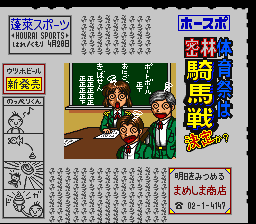
The third chapter in May involves tracking down the Twilight Penguin group who stole test answers to sell — it turns out one of the teachers was involved, but we foil their plans.

In June (chapter 4) we meed Isaac and Julia, an international student couple (interracial! in the US even in 1996 this was unusual in media, and in some ways still is). A ghost joins our party, and we defeat a Devil Jinn accidentally summoned by a member of the occult club.
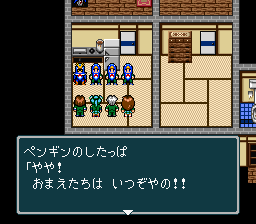
Chapter 5 (July) involves going to Shinmachi north of campus to a Star Festival, but some mysterious group (not the penguins) has stolen the necessary prayer book for the festival, and we have to track it down.
Chapter 6 and 7 (August) involve a school trip to Africa where the plane crashes midway and we’re stranded on an island. There the young principal sneaks into a forbidden temple to try to recover some kind of ancient artifact, which turns out to be a notebook owned by the founder of Hourai. It also turns out that we crashed on the Hourai island, the plane barely made it out of the runway before crashing.

Chapter 8 involves the inventor club’s robot going berserk; it is controlled by Shin, one of the people in the same group as Rachel (who was hypnotizing the student council at the beginning). His goal was to implement strict new rules for campus, but nobody is following them.
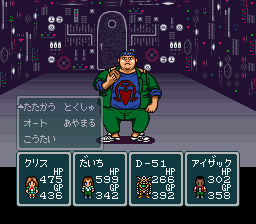
In Chapter 9 we learn the secret group is “Kouzan Nostra”, looking for some kind of secret items to take over the school. Chapter 10 is Christmas, and you have to investigate fake Santas to find out which one is working for Kouzan Nostra.

In Chapter 11 we go to the campus’ research lab to once again stop Kouzan Nostra from acquiring an item they want, and we learn the name of their leader, Jomra. Professor Daiouji tells us that KN needs to implement all the rules in their secret book to be able to take over the school, but we can stop them with three secret items (a pencil, a ledger, and the first student ID card). We happen to already have 2 of them, and Chapter 12 nabs us the third one.
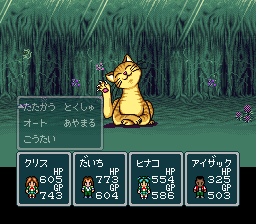
Now in Chapter 13 it’s time to stop the Kouzan Nostra. First, we fly into the student assembly to stop the hypnotizing of the entire class.

Jomra flees under the school, and reveals that the Kouzan Nostra are descendants of miners who were excavating ore from the island when Hourai High School was suddenly built on top of them, trapping them underground. Now it’s time for revenge. He shows us the Mogemoge Idol which is the god they all worship, and then uses the power of the “Keystone”, a special stone made with the island’s ore, to transform into a monster.
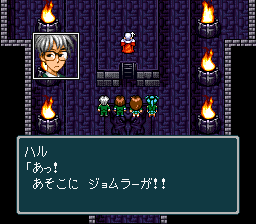
After beating Jomra, the Mogemoge idol comes to life, which surprises Jomra because he had just made up Mogemoge as a way to intimidate Kouzan Nostra into following his plans. But it seems all the bad feelings in the campus have crystallized to give life to the “god”. The three items give us power to fight the final boss.
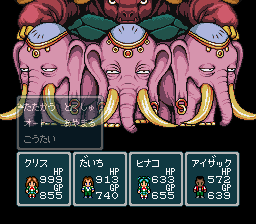

The game ends with the closing ceremony, and you get your “grades” which is a record of what you did in the game. But what happened to the Keystone? It was destroyed, right? Dum dum dum…

This is a pretty average game. There is a lot of content and a lot of stuff to do in the game, even if a lot of it isn’t very meaningful (I didn’t search for the “7 wonders of Hourai Campus” for instance). If the interface and system were a little more up to date it would have been a lot more fun.
I remember when I tried to play it back in 2020, I didn’t got very far in it because the fan translation I was playing with had a lot of bugs that made be lose a lot of progress frequently, but I remember being pretty boring in the gameplay department with a funny story.